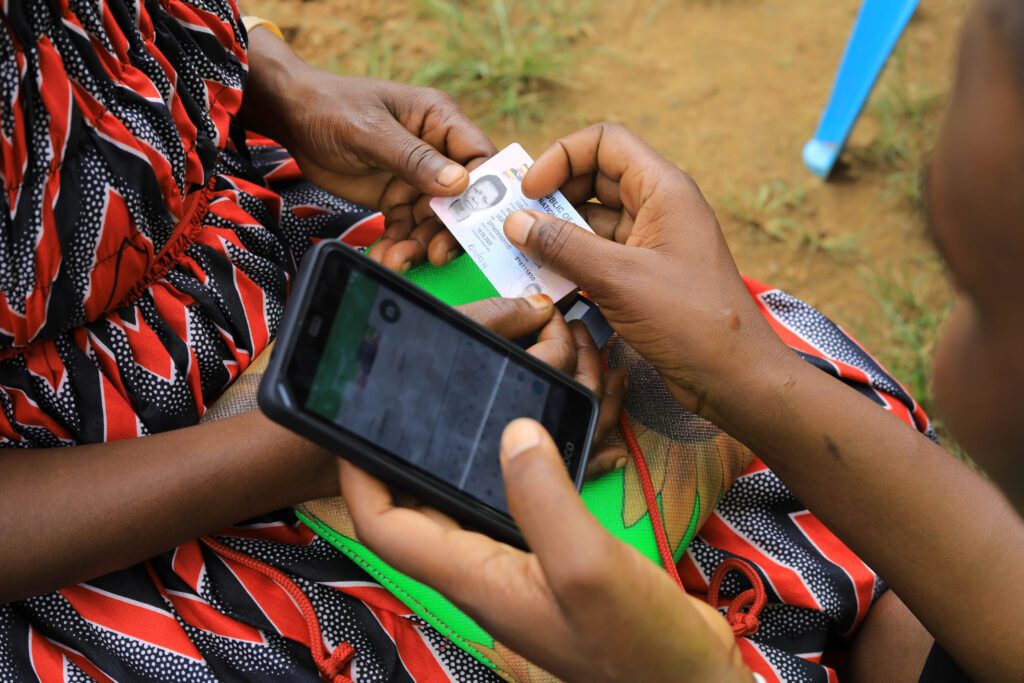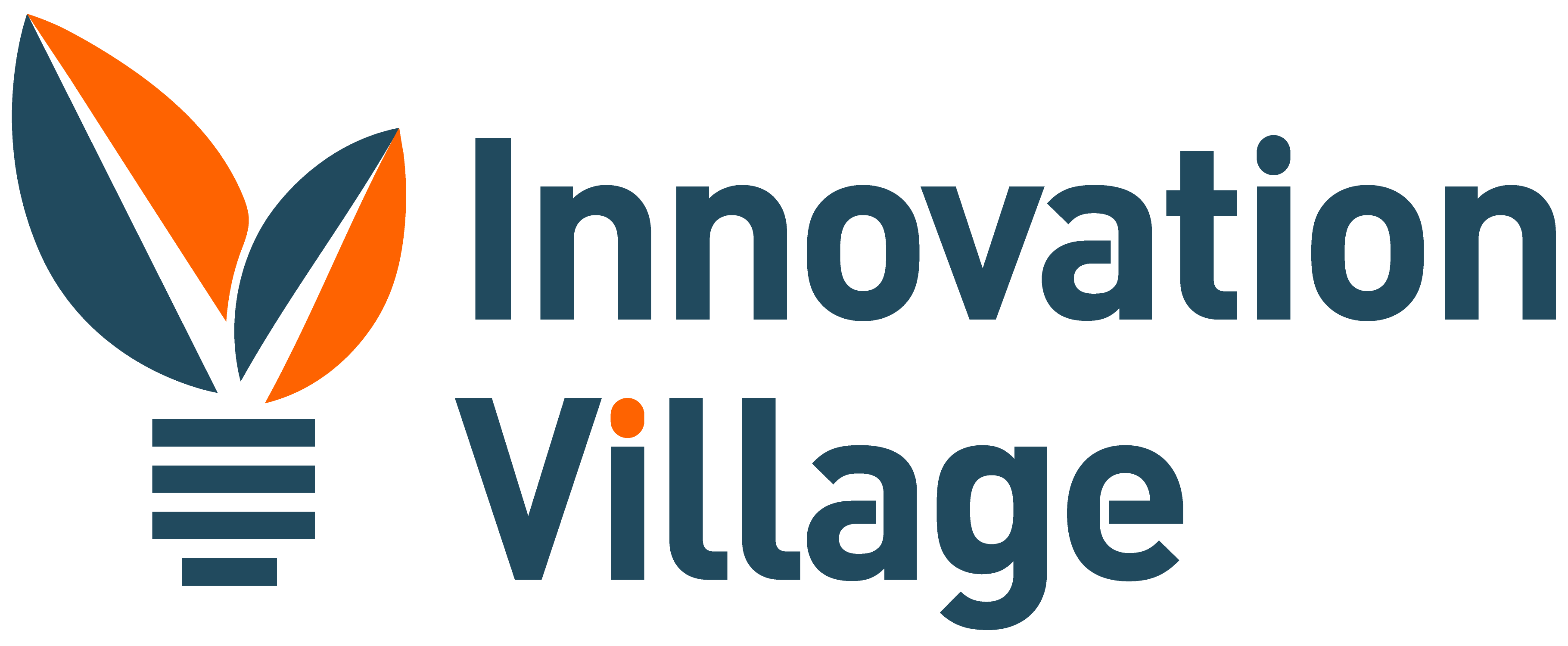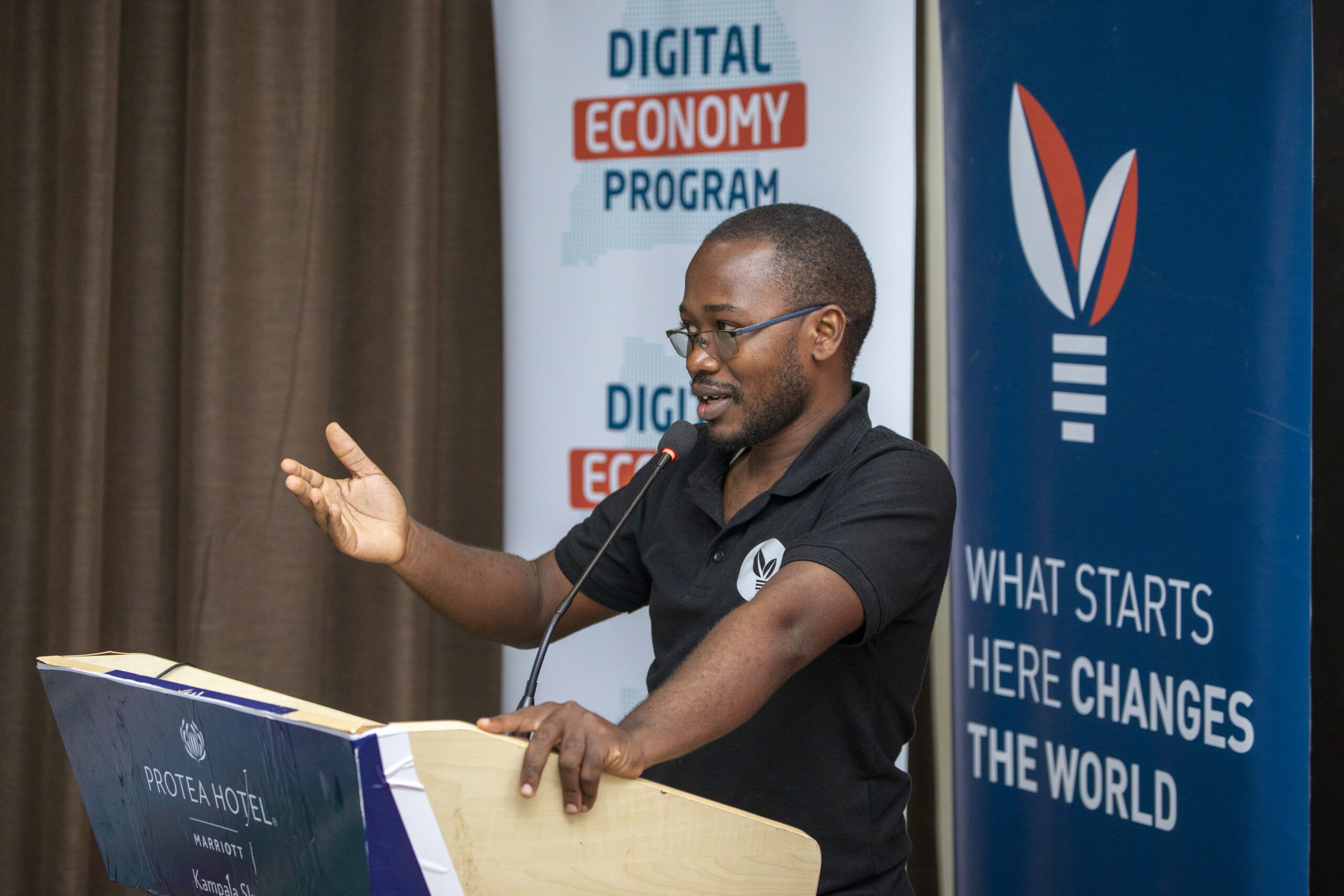As the digital landscape continues to evolve, new concepts and technologies emerge to shape the way we interact with the digital world. One such concept gaining traction is digital rails – a framework that underpins connectivity and accessibility in the digital economy.
The Digital Economy Program implemented by The Village and other partners is leveraging digital rails to drive inclusive digital transformation. Acting as a catalyst for sustainable impact, the program utilizes the rails to address specific challenges and empower marginalized communities. By connecting various stakeholders, including technology solution providers, government bodies, and local communities, the program facilitates collaborative efforts to reach the last mile.
Among the team driving this transformative initiative is Maurice Kamugisha, serving as the program Technical Lead. With a rich background in digital innovation and community empowerment, Maurice and his team are behind making sure the technology is integrated into the different solution partner platforms as they endeavor to extend services to last mile communities. His leadership drives the program’s technical arm, harnessing the potential of digital rails to fuel economic growth. Maurice’s dedication to utilizing technology for positive change has been fundamental in advancing the program’s mission and in this Q&A session, he provides valuable insights into the mechanisms of digital rails and their impact towards the journey to solutioning for last mile individuals.
Q: Maurice, what are digital rails and why are they important in today’s digital economy?
A: Digital rails essentially serve as the foundational infrastructure that enables the seamless flow of digital transactions, services, and information. Think of them as the highways and bridges that connect different digital platforms, devices, and users. In today’s hyper-connected world, digital rails are crucial for ensuring that everyone, regardless of their location or background, can access and benefit from the myriad opportunities offered by the digital economy.
Q: How do digital rails differ from traditional infrastructure, and what benefits do they offer?
A: Unlike traditional infrastructure, which often relies on physical components like roads or cables, digital rails are built on software-based solutions that can scale rapidly and adapt to changing needs. This flexibility allows for faster deployment of digital services and greater agility in responding to user demands. Additionally, digital rails promote interoperability, meaning that different digital platforms and systems can seamlessly communicate with each other, fostering collaboration and innovation. Ultimately, digital rails help democratize access to digital services, driving inclusivity and economic growth.
Q: What role do partnerships play in the development and implementation of digital rails?

A: Partnerships are integral to the success of digital rails initiatives. Building robust digital infrastructure requires collaboration among various stakeholders, including government agencies, private sector companies, non-profit organizations, and local communities. By pooling resources and expertise, partners can accelerate the deployment of digital rails and ensure that they meet the diverse needs of users. Moreover, partnerships enable knowledge sharing and capacity building, empowering local stakeholders to take ownership of digital initiatives and drive sustainable impact. Take for example the digital economy program an initiative born out of a partnership between Mastercard Foundation, Innovation Village and Mastercard Incorporated to provide a blend of digital infrastructure, tools, skilling, and channels to support those innovating to bring opportunities in the burgeoning Digital Economy closer to young people, women, smallholder farmers, small businesses, among others, across hard-to-reach communities all over Uganda, unlocking opportunities that improve lives and livelihoods.
Q: Can you provide some examples of how digital rails are being used to address specific challenges in the digital economy?
A: In many developing countries, digital rails are being leveraged to extend essential services to underserved communities. For instance, mobile payment platforms use digital rails to enable financial transactions in remote areas where traditional banking infrastructure is lacking. Similarly, telemedicine platforms leverage digital rails to connect patients with healthcare providers, improving access to medical care in rural regions. Additionally, digital skills training programs use digital rails to deliver educational content to learners, empowering them to acquire new skills and pursue economic opportunities.
In addressing specific challenges in the digital economy, digital rails have been instrumental in various sectors. One notable example is in financial inclusion, where mobile money platforms leverage digital rails to provide banking services to unbanked populations. These platforms enable individuals to send and receive money, pay bills, and access credit, even in remote areas where traditional banking infrastructure is lacking. By leveraging digital rails, mobile money providers have significantly expanded access to financial services, empowering millions of people to participate more fully in the formal economy.
Another example is in healthcare delivery, where telemedicine platforms utilize digital rails to connect patients with healthcare providers remotely. Through video consultations, electronic health records, and digital prescriptions, these platforms enable individuals to receive medical care without the need for physical visits to healthcare facilities. This is particularly beneficial for patients in rural or underserved areas who may face challenges accessing traditional healthcare services.
Reflection of the Digital Economy Program and agriculture

Additionally, the Digital Economy Program acts as a catalyst for inclusive digital transformation, leveraging digital rails to drive sustainable impact and empower marginalized communities. We operate by connecting various stakeholders, including technology solution providers, government bodies, and local communities, to address the specific challenges faced by last-mile individuals.
In the agricultural sector, the Digital Economy Program plays a vital role in leveraging digital rails to enhance productivity and market access for smallholder farmers. By integrating digital technologies into agricultural practices, such as precision farming techniques and market information systems, we empower farmers to make informed decisions and improve their livelihoods. Through initiatives like digital payment platforms for agricultural produce and access to online agricultural extension services, we facilitate financial inclusion and knowledge dissemination among rural farming communities.
Through the Mastercard technology Community Pass, the program centralizes access to digital services and facilitates collaboration among diverse stakeholders in agriculture. By providing support, resources, and training tailored to the agricultural sector, the Digital Economy Program empowers local communities to leverage digital solutions for economic growth and social development, ultimately transforming the agricultural landscape and improving food security.
Q: What are some key considerations for organizations looking to implement digital rail initiatives?
A: One important consideration is the need for robust cybersecurity measures to protect the integrity and privacy of digital transactions. As digital rails become increasingly interconnected, they also become more susceptible to cyber threats, requiring organizations to invest in robust security protocols and risk management strategies. Additionally, organizations should prioritize inclusivity and accessibility in the design and implementation of digital rails, ensuring that all users, including those with disabilities or limited technological literacy, can fully participate in the digital economy.
Q: Finally, where do you see the future of digital rails heading, and what potential impact do you envision?
A: The future of digital rails is incredibly promising. As technology continues to advance and digital connectivity becomes more ubiquitous, we can expect to see even greater innovation in the realm of digital infrastructure. Digital rails will play a central role in enabling emerging technologies such as artificial intelligence, blockchain, and the Internet of Things, opening new possibilities for economic growth and social development. Ultimately, digital rails have the potential to transform entire industries, empower marginalized communities, and create a more inclusive and equitable digital economy for all.





